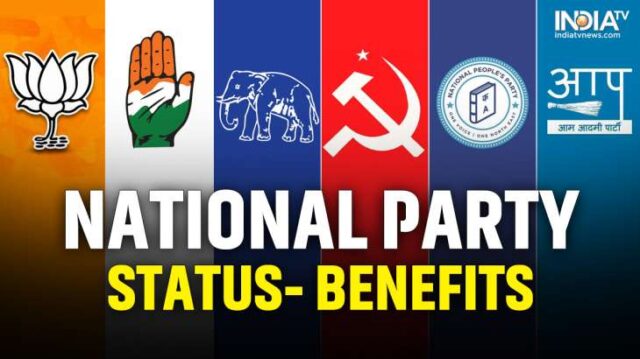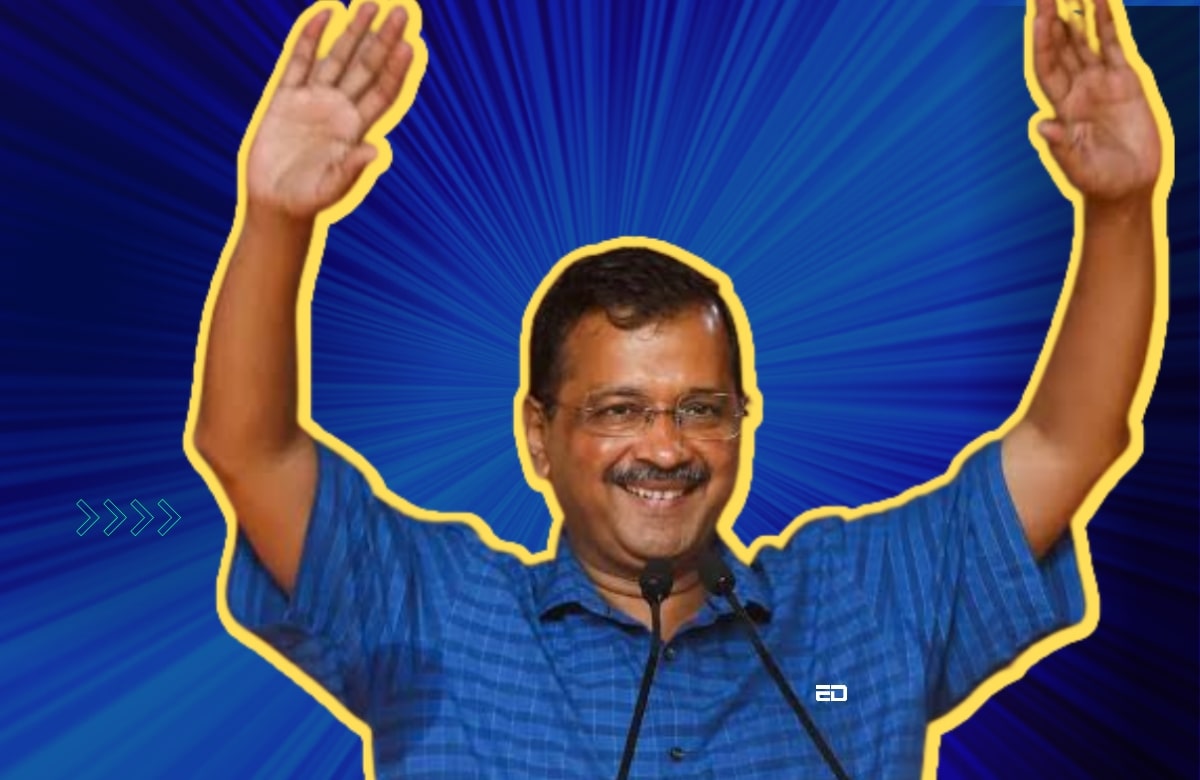The election commission (EC) acknowledged the Aam Aadmi Party (AAP) as a national party on Monday, giving it a boost ahead of the Lok Sabha elections the following year. However, the Nationalist Congress Party (NCP), Communist Party of India (CPI), and Trinamool Congress (TMC) lost their status as national parties.
Based on an evaluation of the parties’ performance in the 2014 and 2019 Lok Sabha elections as well as 21 state assembly elections since 2014, the EC came to its conclusion. Along with other advantages, having the status of a national party guarantees that its candidates across the nation can use its emblem, and it also grants the party access to land for an office in the capital.
The BJP, Congress, Bahujan Samaj Party (BSP), CPI(M), National People’s Party (NPP), and AAP are the six national parties that currently exist in the nation.

What Makes AAP A National Party?
Acting under the Election Symbols (Reservation and Allotment) Order, 1968, which establishes the conditions for recognition as a national or state party, the EC’s order declared AAP had fulfilled the requirement of becoming a recognised state party in four or more states.
The Order
Paragraph 6A
A state party must, among other requirements, receive at least 6% of the votes cast in the most recent Assembly election and at least two MLAs; 6% of the vote and at least one MP from that state in the most recent Lok Sabha election; or 3% of all Assembly seats, or three seats, whichever is higher.
Paragraph 6B
A national party must also have at least four MPs and receive at least 6% of the vote in at least four states during the most recent Lok Sabha or Assembly elections, or at least 2% of the seats in the Lok Sabha with candidates chosen from at least three states.
Paragraph 6C
A party shall continue to be a national or state party if it meets the requirements outlined in Paragraphs 6A and 6B in the “next election,” after the one in which it “got recognition,” as per the order’s amended Paragraph 6C, which took effect on January 1, 2014.
After winning 12.92% of the vote in the 2022 Assembly elections, AAP joined Delhi, Goa, and Punjab as a state party.
Also Read: In Pics: Like Rahul Gandhi, These Leaders Were Disqualified From Legislature In The Past
Why Did TMC Lose Its National Party Status?
According to the EC’s review, the TMC received 0.40 percent and 43.28 percent of the votes in Tripura and West Bengal, respectively, despite not running in the 2019 Lok Sabha elections from Arunachal Pradesh or Manipur.
The party received 44.91% of the vote in West Bengal, 1.41% in Manipur, and 0.30% in Tripura during the Assembly elections from 2016 to 2018. The party did not run in Manipur, but received 48.02% of the vote in West Bengal (2021) according to the most recent polls (2022).
According to the EC, the TMC lost its registration as a state party in Manipur and Arunachal Pradesh but retained it in West Bengal and Tripura. Meghalaya also granted the TMC state party status based on the 2023 polls.
Why Did NCP Lose Its National Party Status?
As a result of its vote shares in the Assembly elections between 2017 and 2018 being 2.28%, 0.95%, and 1.61%, respectively, the NCP lost its status as the state party in Goa, Manipur, and Meghalaya.
In Maharashtra, where it received 16.71% of the vote in the 2019 Assembly elections, it continues to be a state party. In Nagaland, the party also received state party status as a result of the Assembly elections held earlier this year.
Why Did CPI Lose Its National Party Status?
The CPI was no longer recognised as a state party by the EC in West Bengal and Odisha, but it is still recognised in Kerala, Manipur, and Tamil Nadu.
The party received 0.79% of the vote in Tamil Nadu in the Assembly elections from 2016 to 2019 (despite having two MPs from that state), 1.45% in West Bengal, 0.74% in Manipur (though it received 8.27% of the vote in that state in the 2019 Lok Sabha election), and 0.12% in Odisha.
Other Parties
On the basis of their recent poll results, the EC also granted state party recognition to the Lok Janshakti Party in Nagaland, the Voice of the People Party in Meghalaya, and the Tipra Motha in Tripura.
The Peoples Democratic Alliance in Manipur, the Pattali Makkal Katchi in Puducherry, the Rashtriya Lok Dal in Uttar Pradesh, the Bharat Rashtra Samithi in Andhra Pradesh, the Revolutionary Socialist Party in West Bengal, and the Mizoram People’s Conference in Mizoram all lost their status as state parties.
What do you think of this new landscape of Indian politics? Let us know in the comments section!
Image Credits: Google Images
Feature image designed by Saudamini Seth
Sources: The Indian Express, The Hindu, The Times of India
Find the blogger: Pragya Damani
This post is tagged under: AAP, AAP National Party, national party, TMC, NCP, CPI, national party status, status revoked
Disclaimer: We do not hold any right, or copyright over any of the images used, these have been taken from Google. In case of credits or removal, the owner may kindly mail us.
Other Recommendations:
FlippED: Is AAP At Fault For Not Controlling Pollution In Delhi Despite Ruling Punjab And Delhi Both


































[…] Read More: ResearchED: Why Was AAP Given National Party Status While TMC, NCP, CPI Lost Theirs? […]
[…] Read More: ResearchED: Why Was AAP Given National Party Status While TMC, NCP, CPI Lost Theirs? […]